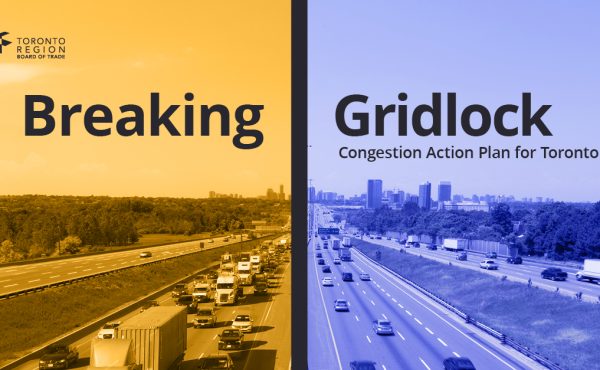The Segway issue came back again to the City of Toronto’s Works Committee this morning, in a lively and sometimes surreal debate. The good news is, these machines have finally been put in their place — for the moment.

The day began, suprisingly, with Segway Ontario admitting in a brief deputation that the issue was basically a provincial one, and that they were resigned to waiting to see what the province will do about it (under Bill 169, An Act to Amend the Highway Traffic Act, the provincial government can now allow new vehicles on provincial roads as pilot projects). Despite this, the Segway boosters on council — councillors Bill Saundercook and Glenn De Baeremaeker — planned to introduce a motion asking the City of Toronto to take a proactive role in getting a pilot project going in Toronto so that Segways will come to our sidewalks as quickly as possible.
But then an additional spin was thrown into the mix. The Stuckey family of London, Ontario appeared. Megan Stuckey, a 14-year-old girl, has lost the bottom of both legs and uses prosthetic legs and feet. In a straighforward and sensible presentation, the family explained how using a Segway had given her a great deal more mobility, and asked that Segways be allowed as assistive mobility devices (like electric wheelchairs) for the small number of disabled people who can use them.
The two pro-Segway councillors pounced on this presentation as a wedge with which to push their own agenda of getting Segways allowed on sidewalks for anyone, disabled or not. To be fair, Councillor Saundercook (who is not on the Works Committee, and so could only speak, not vote) was mostly simply enthusiastic for this new technology, and allowed that it might not be appropriate in some circumstances (e.g. sidewalks downtown).
Councillor De Baeremaeker was another matter. He shamelessly used the case of “Megan” (as he constantly referred to her) to push his broader agenda, constantly fudging the distinction between disabled and able-bodied users. When she gave a brief deputation, he asked her in an obsequious manner a series of soft questions culminating in “what do you want to do when you grow up?” After she answered (engineer or scientist) he suggested that she should consider becoming a politician, and would be a wonderful and welcome addition to City Council (Councillor Carroll had to point out to him that she was from London, not Toronto).
Once the debate started in committee, for every possible objection to Segway use in general, De Baeremaeker would accuse the person of heartlessly depriving Megan of her right to mobility, or even of endangering her life (in the case of those, like myself, who argued Segways should be used on roads, not sidewalks). When the city legal officer gave legal advice that any city bylaw allowing the use of Segways as assistive mobility devices would have no legal effect because provincial laws would supercede it, De Baeremaeker began badgering the city lawyer by asking him if he personally wanted young Megan to be be stopped and fined if she drove her Segway in Toronto so she could get around the city. This deliberate confusion of the issues reached its nadir when he accused the deputant from the Toronto Islands — the only deputant to speak after the Stuckeys, and who had clearly stated he had no objection to Segways on the island as mobility assistive devices, but didn’t want them on the island as recreational devices — of cruelly depriving Megan of the opportunity to see the islands. The other councillors had to force him to retract this statement. It was an astonishing performance.
Fortunately, none of the other councillors bought his histrionics. Almost all of them chose to speak, and they each clearly stated that there was a big difference between allowing Segways as mobility assistive devices — which they all supported — and allowing them to be used by able-bodied people on sidewalks, which they did not support. Councillor Palacio injected some sense into the debate, pointing out the simple fact that “sidewalks are for pedestrians,” and noting that he had consulted extensively with his constituents on the issue (what a concept!) and that they all thought Segways on sidewalks were a bad idea. He and councillor Fletcher crafted a sensible motion that the City simply wait until the province had finished its pilot projects and work with the results (which was, in fact, all that even Segway Ontario asked for).
In the end, the Palacio/Fletcher motion was supported overwhelmingly, with only De Baeremaeker objecting. Even better, the committee moved that the City ONLY supports Segways as assistive mobility devices, not for any other purposes (only De Baeremaeker and Del Grande voted against). So, as far as the City of Toronto is concerned, Segways have been put in their place.
The battle now moves to the provincial government. The key issue is making sure that any provincial pilot projects either:
a) are restricted to the use of the Segway as an assistive mobility device, or
b) for able-bodied users, only allow the use of Segways on roads, not sidewalks or recreational paths
If you wish to help with this issue, write, fax, email or call the office of the Ontario Minister of Transport, Harinder Takhar.
Harinder Takhar
Ministry of Transportation
77 Wellesley St. W., 3rd Floor, Ferguson Block
Toronto ON M7A 1Z8
Tel: 416-327-9200
Fax: 416-327-9188
htakhar.mpp@liberal.ola.org



